Deer antlers have been used for various purposes for centuries, ranging from tools and weapons to decorative items. The unique shape and texture of antlers make them a versatile material for creating a wide range of items. From knife handles and jewelry to home decor and furniture, the possibilities for things to make from deer antlers are endless.
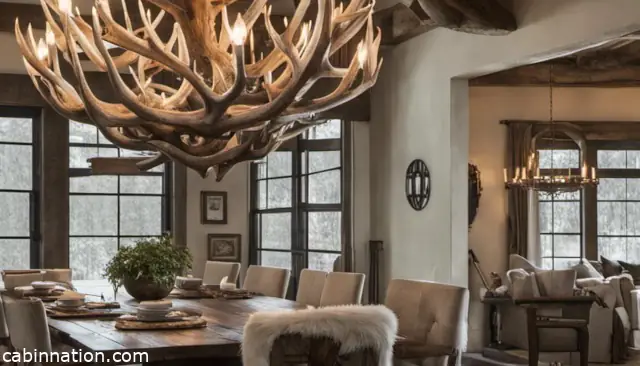
Contents
- Things to Craft from Deer Antlers
- Unique Crafts Using Deer Shed Antlers
- Making Jewelry and Accessories
- Antler Home Decor and Furniture
- Refining and Selling Antler Crafts
- Safety Measures for Working with Antler Sheds
- Collecting and Preparing Deer Antlers
- Final Thoughts: Things to Make from Deer Antlers
- Frequently Asked Questions
- Related Articles:
Things to Craft from Deer Antlers
Whether you’re an experienced antler crafter or just starting out, working with deer antlers can be a rewarding and enjoyable experience. With a little creativity and some basic tools, you can transform these natural materials into beautiful and functional items that will be treasured for years to come.
Unique Crafts Using Deer Shed Antlers
One of the most elegant crafts I’ve made is an antler letter opener. This not only serves its functional purpose but also adds a touch of sophistication and rustic charm to a working desk. Another interesting project is making antler whistles from antler tips, which are not only fun but practical for outdoorsman and hunters.
Crafting with deer antlers isn’t just limited to functional items, though; you can also create stunning art pieces and jewelry by carving intricate designs or adorning them with decorative elements. Antler rings, for example, make for a unique and captivating accessory.
Show off your creativity further by crafting bottle openers, game calls or fishing rod holders made of deer antlers.
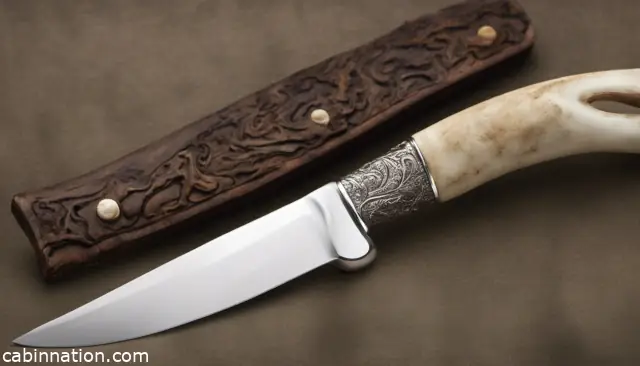
For the DIY crafter seeking a more hands-on experience, there are plenty of carving opportunities. If you’re looking for a practical application, then consider crafting knife handles, as deer antlers make for a sturdy and comfortable grip.
Making Jewelry and Accessories
I enjoy crafting jewelry and accessories with buck antlers due to their versatility and natural beauty. Antlers can be transformed into unique pieces such as buttons, picture frames, and pendants.
One of my favorite projects is making antler rings. I carefully carve the antler into my desired shape and size, then I polish it with fine-grit sandpaper for a smooth finish. Every ring has its distinct pattern, making it truly one of a kind.
I’ve found that deer antlers make excellent fire starters. I carve a piece of antler into a suitable shape and attach a ferrocerium rod to create a reliable tool for outdoor adventures.
Deer antlers can also be repurposed to make scout neckerchief slides, adding a touch of rustic charm while serving a purpose.
I’ve also crafted beautiful writing pens using deer antlers. These functional pieces not only make writing unique and fun but also bring a touch of nature into my workspace.
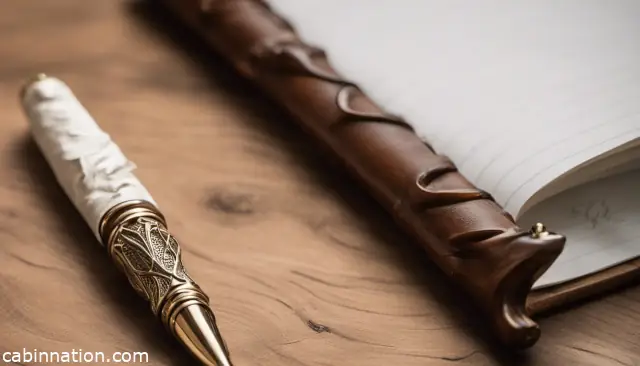
Antler Home Decor and Furniture
There’s a unique charm in using deer antlers for home decor and furniture. Incorporating them into your space can give off a rustic vibe that adds character to any room.
One popular way to use antlers in home decor is by creating an antler chandelier. Antlers can be woven together to form beautiful light fixtures, making them an eye-catching centerpiece for a living room or dining area. Creating an antler chandelier requires some skill, but the result is a one-of-a-kind piece that brings warmth and rustic charm to your space.
Antlers can also be used to design unique lamp stands. A carefully selected and refinished antler can serve as the base for a table lamp or even a floor lamp.
Combining antlers with other natural materials such as barn wood, or contrasting them with sleek metals, creates an interesting antler lamp stand that makes for a striking yet functional piece.
Antlers, whether large or small, can also be used as subtle accents in your home decor. For instance, a small antler can be transformed into a stylish coat hook or a wall-mounted jewelry holder. This can add a touch of rustic elegance to an entryway or bedroom without being too overwhelming.
Antlers can also be utilized in furniture design. With some creativity, you can incorporate antlers into the construction of tables and chairs, using them as legs or even as structural supports.
Blending antlers with various design elements can produce a unique piece that is both functional and aesthetically pleasing.
Refining and Selling Antler Crafts
When working with antler crafts, I find that having the right tools is essential. I often use a combination of woodworking tools, such as a wood lathe and Dremel rotary tool, to shape and refine the antlers into unique, creative pieces.
Antlers are a renewable resource provided by mother nature, and they can come in various sizes and shapes, depending on the animal, such as elk or deer.
One challenge I face while working with antlers is their porous nature. To overcome this, I usually fill these porous sections using CA glue, which helps to strengthen and enhance the overall appearance of the finished product.
After I’ve completed an antler craft, I consider different ways to sell my finished products. eBay and Etsy are an excellent online platforms, which allows me to showcase and sell my crafts to a broader audience.
Local yard sales are another great option, providing an opportunity to connect with potential buyers face-to-face in my community.
I’ve also found that having an email newsletter helps me connect with my audience and keep them informed about my latest creations and upcoming events. The newsletter allows interested buyers to stay updated on new pieces, ensuring they don’t miss out on purchasing unique antler crafts they’ll cherish.
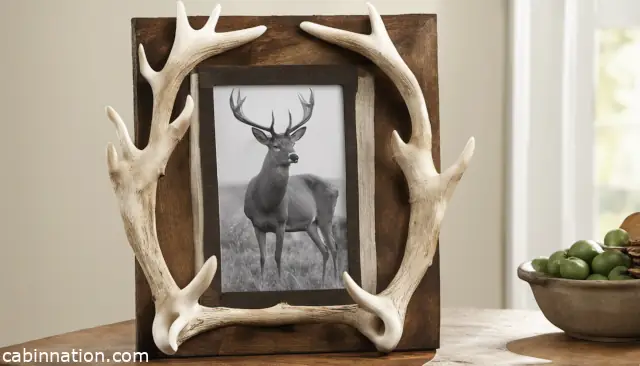
Safety Measures for Working with Antler Sheds
When working with antler sheds, it’s crucial to prioritize safety in order to protect yourself from potential hazards. This is not meant to be a full, comprehensive list of safety considerations that you should take but here are some important measures I take to ensure my safety when crafting with antlers:
First, it is essential to wear a respirator, as breathing in antler dust can be harmful to your lungs. A good quality dust mask may suffice, but a respirator provides better protection against lung problems that might result from repeated exposure to fine antler particles.
In addition to maintaining respiratory health, it’s crucial to protect your eyes while working with antlers. I always make sure to wear safety glasses as a preventive measure. Safety glasses can shield your eyes from flying debris and dust that could cause injury during the cutting, grinding, or polishing processes.
Hacksaws and other cutting tools are commonly used for working with antlers, so ensuring your hacksaw is sharp and in good working condition is critical for both efficiency and safety. A dull blade can cause accidents as it requires more force and could slip during use. Always inspect your tools before starting a project to avoid unnecessary risks.
Establishing basic home shop safety practices is another aspect of working with antler sheds. This involves organizing your workspace, keeping tools properly stored when not in use, and ensuring that you have a clean, well-lit area to work in. Cluttered and dim workspaces can increase the likelihood of accidents.
Collecting and Preparing Deer Antlers
I’ve found that collecting shed deer antlers can be an enjoyable and rewarding outdoor activity. It’s important to gather them responsibly and ethically, whether you’re a hunter or just someone interested in using antlers for various projects.
Collecting Antlers
When it comes to collecting shed antlers, shed hunting is a popular method. This activity usually occurs during late winter and early spring when deer have naturally shed their antlers after the mating season. Find antler sheds from wild deer ensures no harm has come to the animal itself.
Another way to find deer antler is through hunters who may have acquired them during hunting season. Hunters often accumulate antlers, and some may be willing to give away or sell their extras for a reasonable price.
This can be a great option if you’re friends with a hunter or can connect with one through local hunting communities. Antlers also make nice dog treats. So if you find extra antlers, consider sharing with a dog owner.
Preparing Antlers
Once you have collected your deer antlers, it’s time to prepare them for your antler projects. First and foremost, you should clean the antlers to remove any dirt, blood, or tissue that may still be present.
Using a brush and mild soap, gently scrub the antlers, being careful not to damage the surface. Rinse with water and allow the antlers to air dry completely before proceeding.
Next, you might want to consider cutting the antlers into smaller sections if you need them for specific projects. Use a saw or a Dremel tool with a cutting wheel for this task. Make sure to wear gloves and safety eyewear while cutting to protect yourself from any possible accidents.
Lastly, to preserve the natural beauty of the antlers and protect them from future damage, you can apply a clear coat of polyurethane, spray lacquer, or another sealant. This helps to maintain the color and integrity of the antlers, ensuring that your projects will stand the test of time.
Final Thoughts: Things to Make from Deer Antlers
Working with antler crafts is an exciting and rewarding process that allows me to create beautiful, one-of-a-kind pieces. By using the right tools and focusing on refining each piece, I’m able to produce high-quality antler crafts that my customers appreciate.
Embracing different sales platforms like eBay, Etsy, yard sales, and email newsletters, I can effectively connect with potential buyers. Overall, the key to success in the antler craft industry is patience, dedication, and a good understanding of the available tools and techniques to create outstanding, eye-catching pieces.
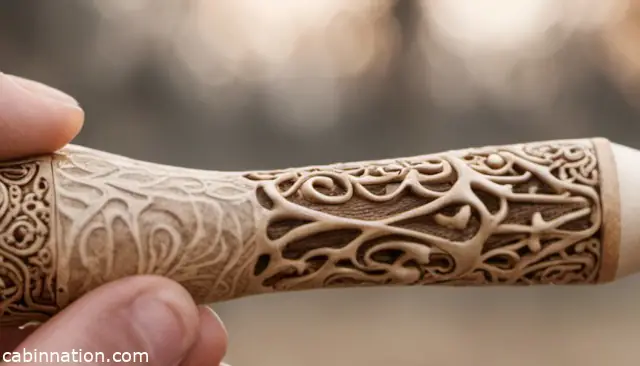
Frequently Asked Questions
How can I create a deer antler wreath?
To create a rustic wreath, First, gather your antlers, which can be full-sized or smaller shed antlers. Arrange them in a circular pattern, ensuring a balanced wreath shape and design. Use a hot glue gun or strong wire to secure the antlers together, and then add additional decorations like ribbons, greenery, or ornaments if desired.
What are some easy deer antler projects?
There are several easy projects you can make with deer antlers, such as:
- Antler hooks: Attach a single antler to a wooden plank to make a rustic coat or key hook.
- Wine rack: Combine multiple antlers to create a unique wine bottle holder.
- Candle holders: Cut and sand flat sections of antlers and attach complementary-sized candles.
- Jewelry Holder: Utilize the tines of antlers to hold necklaces or bracelets.
How do I make deer antler knives?
To create a deer antler knife, start by selecting a suitable antler piece for the handle. Cut the antler to the desired length. Prepare the blade by sharpening it and securing it into a brass or steel guard. You can create a hole in the antler for the blade’s tang, pin and epoxy it in place. Finally, shape and polish the handle to your preference.
What are some deer antler display ideas?
Deer antler displays can range from simple to more elaborate. Some ideas include:
- Mounting antlers directly on the wall.
- Utilizing a wooden plaque as a backdrop for the antlers.
- Adding antlers to an existing shelf or bookcase.
- Incorporating antlers into a larger gallery wall display.
- Building furniture using antlers
What are some creative deer antler wall decor ideas?
For a unique wall decor idea, you can:
- Arrange multiple antlers into a dramatic sculptural piece.
- Intertwine antlers with string lights and hang them as a decorative lighting element.
- Use antlers to create a distinct frame for a mirror or artwork.
- Combine antlers with plant holders for an outdoor-inspired green space.
What do you put on antlers to preserve?
Preserving antlers doesn’t require much. I recommend cleaning them gently with soap and water or a mild peroxide solution to remove dirt and debris. Allow the antlers to dry completely. To maintain their natural look and prevent damage, you can apply a light coat of linseed or mineral oil to the surface. Reapply the oil as needed to keep them in good condition.
